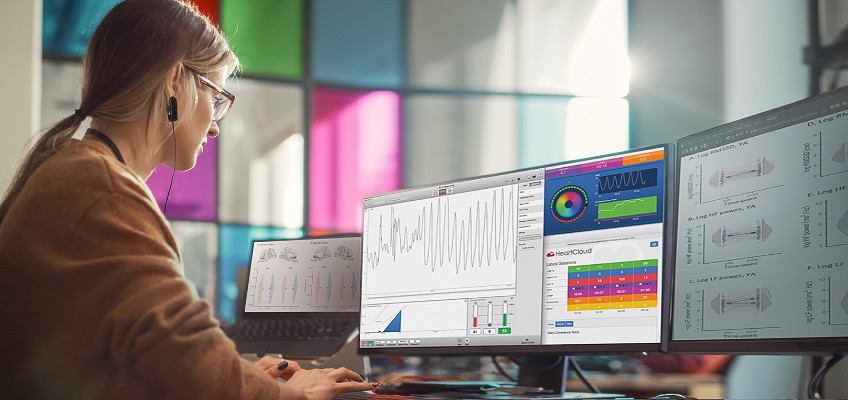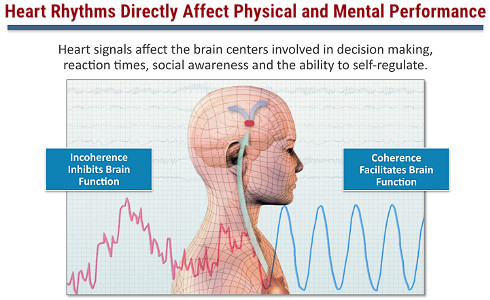
Research Suggests Using the emWave® Pro Rewires the Brain
A groundbreaking study involving researchers mainly from USC but also from UCLA, UCI, Rutgers, and Vanderbilt Universities, and supported by NIH funding, has unveiled the potential of daily heart rate variability (HRV) coherence biofeedback to improve neural connectivity and emotional well-being. HRV, a measure of variations in the time intervals between heartbeats, is closely linked to emotional regulation and overall health.
The study explored the effects of five weeks of daily HRV coherence biofeedback training, using the emWave Pro. One group was trained to increase coherence and the other without, trained to decrease it or maintain current levels. Participants in the coherence-increasing group showed remarkable results. Brain imaging revealed actual growth in the orbitofrontal cortex (OFC)* and its cortical volume**, a region vital for emotional regulation and decision-making. These changes were accompanied by elevated resting HRV levels, better mood, and improved emotional well-being.

The findings suggest that simple HRV biofeedback techniques can influence brain structure, supporting the idea that training heart rate variability can have far- reaching effects on mental and emotional health. By improving HRV, individuals may enhance brain function and overall quality of life.
Also, this research highlights the potential relevance of HRV coherence biofeedback for cognitive health, particularly in older adults.
The study showed that HRV biofeedback-induced cortical volume increases occurred in both younger and older adults.
This is significant given the decline in frontal brain regions observed in conditions like mild cognitive impairment (MCI), Alzheimer’s disease, and frontotemporal dementia. These results suggest that HRV biofeedback could offer a simple, non-invasive tool to support brain health and emotional well-being across different age groups, with implications for preventing or mitigating neurodegenerative conditions.
Background Notes:
*Orbitofrontal cortex is a specific region in the front part of your brain, right above your eyes (that’s the "orbito" part, referring to the eye sockets). The OFC plays a key role in decision-making, emotional regulation and social behavior (understanding social cues and behaving appropriately).
**Cortical volume changes: The brain’s outer layer, the cortex, is made up of gray matter. "Cortical volume" refers to the amount of this gray matter in a specific area. "Changes" simply means that the amount of gray matter increased or decreased in that area. Think of it like this: if you were to measure the amount of "brain stuff" in a certain part of the brain, that’s the volume.
View Research Paper:
Heart Rate Variability (HRV) Changes and Cortical Volume in a Randomized Trial of HRV Biofeedback. A Study by Yoo et al., 2022. International Journal of Psychophysiology 181 (2022) 50-63.

